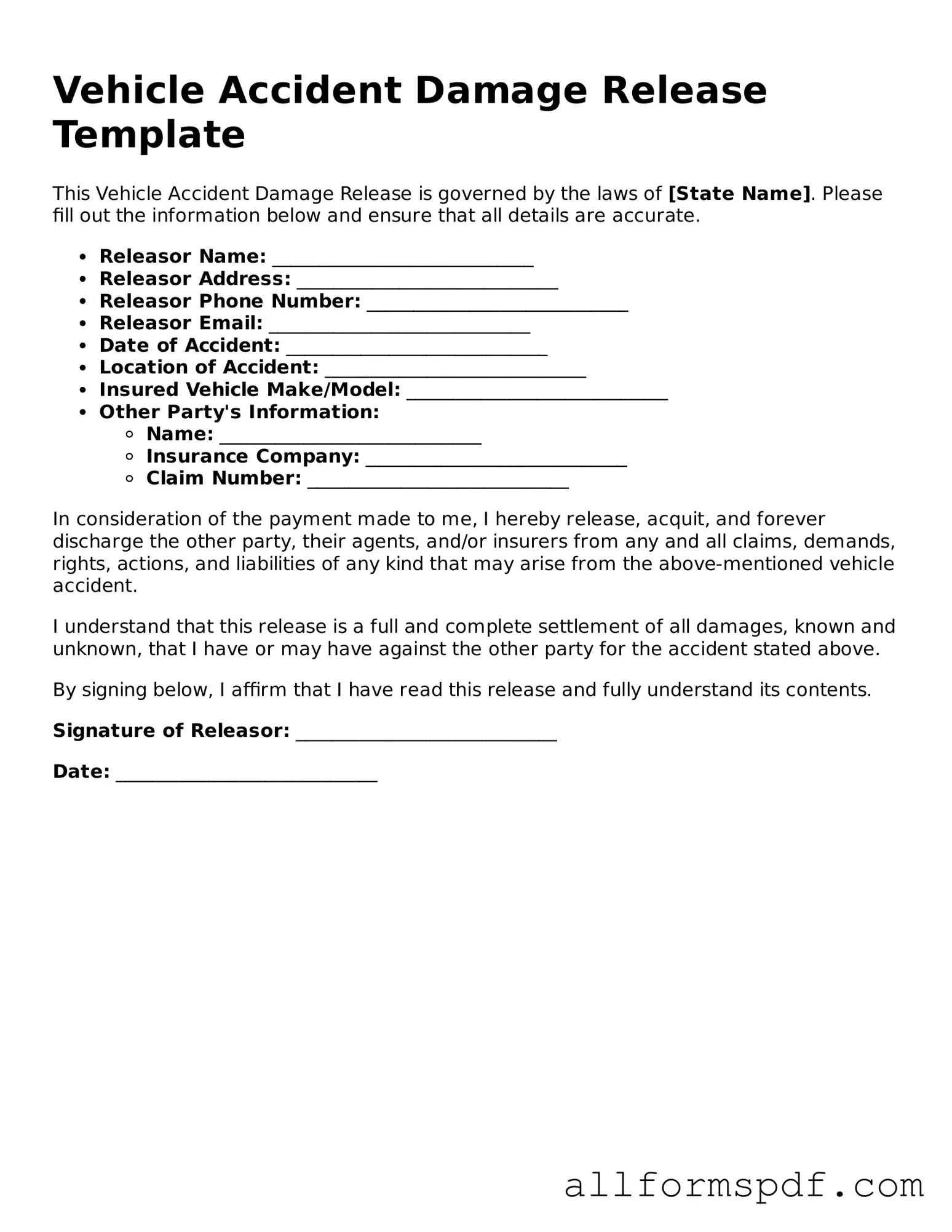Filling out a Vehicle Accident Damage Release form can be a straightforward process, but many individuals make common mistakes that can lead to complications down the road. One frequent error is providing incomplete information. It’s crucial to ensure that all required fields are filled out accurately. Missing details, such as the date of the accident or the names of involved parties, can delay the processing of your claim.
Another mistake often made is failing to read the form thoroughly. Many people rush through the paperwork without understanding the implications of what they are signing. This can lead to unintended consequences, such as waiving certain rights or benefits. Taking the time to read and comprehend each section can prevent misunderstandings later on.
Some individuals also overlook the importance of documenting the accident itself. It’s not enough to simply fill out the form; providing supporting evidence, like photographs or police reports, can strengthen your case. Without this documentation, your claims may be questioned or denied, leaving you without the compensation you deserve.
Additionally, people sometimes underestimate the significance of signatures. A common mistake is not ensuring that all required parties sign the form. If a signature is missing, it can render the document invalid. It’s essential to double-check that every necessary person has signed before submitting the form.
Finally, individuals may not keep copies of the completed form. After submission, having a personal record is vital for future reference. If any disputes arise or if you need to follow up on your claim, having a copy can serve as a valuable resource. Always make sure to keep a copy for your records to avoid unnecessary complications.
